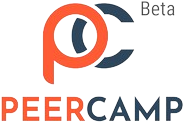Human Eye and The Colourful World
- All Levels
- 3 hours
- 11-18 Years
-
 Online Classes (1-to-1)
Online Classes (1-to-1)
 INR 1200.00 Monthly
INR 1200.00 Monthly

Ankit Singh
India |
(1 vote)
The chapter "The Human Eye and the Colourful World" explains the structure and function of the human eye, which allows us to see the world around us.
It covers important parts like the cornea, iris, pupil, lens, retina, and optic nerve.
The chapter also discusses
- The eye's ability to adjust its focus (accommodation)
- common vision defects (myopia, hypermetropia, and presbyopia)
- and their corrections using lenses.
I Will Provide Expert Accounting and Financial Analysis Services
- All Levels
- 1 hour
-
 Online Classes (1-to-1)
Online Classes (1-to-1)
 INR 2500.00 Monthly
INR 2500.00 Monthly

Sapna Pamnani
India |
(1 vote)
Are you looking for a professional accountant to handle your financial statements, bookkeeping, tax filings, or financial analysis?
Look no further! With my expertise in accounting and finance, I will provide accurate and efficient services tailored to your needs.
Curriculum Details
Lesson 1: Introduction to Accounting
- Overview of accounting, principles, types of accounts, and importance in business
Lesson 2: Bookkeeping & Journal Entries
- Recording transactions, double-entry system, ledgers, and trial balance
Lesson 3: Financial Statements
- Income Statement, Balance Sheet, Cash Flow Statement – format & interpretation
Lesson 4: Budgeting & Forecasting
- Creating budgets, variance analysis, forecasting techniques
Lesson 5: Payroll & Tax Basics
- Salary structure, payroll entries, basics of TDS, GST, and income tax
Lesson 6: Accounting Software (QuickBooks/Xero)
- Hands-on session in QuickBooks or Xero – setting up the company, creating invoices, tracking expenses
Lesson 7: Excel for Accountants
- Excel formulas, pivot tables, charts, and templates for accounting
Lesson 8: Financial Analysis Tools
- Ratio analysis, trend analysis, performance metrics
Lesson 9: Audit & Compliance
- Types of audit, internal controls, audit process, compliance checklist
Lesson 10: Final Assessment & Review
- Review of all topics, case study project, assessment, Q&A
I Will Turn You Into a Fearless English Speaker – No More Hesitation!
- All Levels
- 1 hour
- 1-18 Years
-
 Online Classes (1-to-1)
Online Classes (1-to-1)
 INR 1000.00 Monthly
INR 1000.00 Monthly

Sapna Pamnani
India |
(1 vote)
Do you feel nervous when speaking English?
Do you struggle to find the right words or worry about making mistakes? Imagine speaking fluently, confidently, and without hesitation—just like a natural speaker!
This is not a boring grammar class. This is an action-packed, high-energy English-speaking transformation designed to take you from zero to fearless.
Suggested Module Breakdown:
Lesson Name: Phase 1: Breaking the Barrier – Overcoming Fear, Building Grammar & Vocabulary (Day 1-7)
Lesson 1: Introduction to English
- The Importance of English
- Setting goals (Why do you want to learn English?)
- Breaking the fear: mindset and motivation
Lesson 2: Grammar Basics
- Parts of speech (nouns, verbs, adjectives, etc.)
- Sentence structure (subject + verb + object)
- Tenses (Present, Past, Future – simple overview first)
- Articles, Prepositions, and Conjunctions
Lesson 3: Vocabulary Builder
- Daily use words (family, food, school, time, etc.)
- 10 new words every session with usage
- Fun activities: synonym/antonym games, word puzzles
Lesson 4: Conversation Skills
- Introducing yourself and others
- Asking & answering questions
- Role-plays (shopping, restaurant, doctor visit, etc.)
- Expressing opinions politely
Lesson 5: Speaking Practice
- Group discussions on simple topics
- Storytelling and picture description
- Pronunciation and body language tips
- Public speaking basics
Lesson 6: Confidence Booster
- Tips to overcome hesitation and fear
- Positive self-talk and preparation
- Regular feedback and encouragement
- Personal speech project
ICSE & CBSE Class 7: Mastering English Grammar and Writing Skills
- Beginner
- 50 minutes
- 6-15 Years
-
 Online Classes (Group)
Online Classes (Group)
 INR 750.00 Weekly
INR 750.00 Weekly

Srinandan Murthy
India |
(1 vote)
Students will develop all the core ICSE and CBSE grammar topics (tenses, voice, speech, sentence transformation, etc.), ensuring fewer errors in both objective and writing sections.
Improve accuracy in the grammar section and reduce mistakes in essays, letters, and comprehension answers.
My classes are lively and interesting. I want the kids to learn and love the educational process.
𝐏𝐥𝐞𝐚𝐬𝐞 𝐧𝐨𝐭𝐞: Each group is limited to a 𝗺𝗮𝘅𝗶𝗺𝘂𝗺 𝗼𝗳 𝟰 𝘀𝘁𝘂𝗱𝗲𝗻𝘁𝘀. This is to ensure personalized focus and quality of the lesson.
The price listed is 𝗽𝗲𝗿 𝘀𝘁𝘂𝗱𝗲𝗻𝘁 𝗳𝗼𝗿 𝘁𝗵𝗿𝗲𝗲 𝗰𝗹𝗮𝘀𝘀𝗲𝘀 𝗽𝗲𝗿 𝘄𝗲𝗲𝗸.
ICSE English Grammar & Writing Skills (Classes 5–8) (Full Course)
- Beginner
- 126 hours
- 6-15 Years
-
 Online Classes (Group)
Online Classes (Group)
 INR 1500.00 Weekly
INR 1500.00 Weekly

Srinandan Murthy
India |
(1 vote)
Topics
1.) Sentence Basics & Parts of Speech (Revision)
- Types of sentences, subject-predicate, nouns, pronouns, verbs, adjectives, adverbs, prepositions, conjunctions, interjections (I plan to start light start — revise Class 4 concepts, identify weak areas)
2.) Nouns & Pronouns in Detail
- Types of nouns (common, proper, abstract, collective, material, countable/uncountable), number, gender, possessives; Pronoun types and agreement.
3.) Verbs—Forms & Tenses
- Main/auxiliary verbs, transitive/intransitive, regular/irregular verbs; Simple present, past, future; continuous and perfect aspects
4.) Tenses Continued & Modals
- Perfect continuous tenses, sequence of tenses, modal verbs (can, could, may, might, must, shall, should, will, would, ought to, need, dare) (I aim to teach how to link with spoken English corrections.)
5.) Adjectives & Adverbs
- Degrees of comparison, position of adjectives, types of adverbs, comparative forms, and common mistakes
6.) Prepositions & Conjunctions
- Preposition types (place, time, cause, means, accompaniment); Coordinating, subordinating, correlative conjunctions. Focus on usage in sentences
7.) Articles, Determiners & Quantifiers
- Definite, indefinite, zero article; each, every, some, any, few, little, much, many, all, most
8.) Active & Passive Voice
- Rules for all tenses, changing direct to indirect instructions, and avoiding awkward passives
9.) Direct & Indirect Speech
- Statements, questions, commands, exclamations.
10.) Transformation of Sentences
- Affirmative/negative, degree of comparison, combining sentences, question tags, simple/compound/complex
11.) Punctuation & Capitalisation
- Full stop, comma, semicolon, colon, apostrophe, quotation marks, dash, brackets
12.) Error Correction & Editing
- Subject-verb agreement, misplaced modifiers, tense shifts, pronoun errors, and preposition errors
13.) Exam Writing Integration
- Apply grammar to composition, notice writing, email, and comprehension answers.
The preparation also consists of
- Reviewing common errors and conducting periodic revision tests.
- Mock grammar paper and past paper practice.
ICSE English Grammar & Writing Skills (Classes 9-10) (Full Course)
- Beginner
- 120 hours
- 11-15 Years
-
 Online Classes (Group)
Online Classes (Group)
 INR 1500.00 Weekly
INR 1500.00 Weekly

Srinandan Murthy
India |
(1 vote)
Topics
1.) Sentence Structure & Parts of Speech
- Clause types, phrase types, subject-verb agreement, and common ICSE pitfalls
2.) Tenses & Sequence of Tenses
- All 12 tenses; perfect and perfect continuous aspects; tense shifts; sequence in reported speech
3.) Modals & Conditionals
- Modal verbs (can, could, shall, should, etc.); zero, first, second, third conditionals; mixed conditionals
4.) Active–Passive Voice
- Voice changes for all tenses, imperatives, modals; avoiding awkward passives
5.) Direct–Indirect Speech
- Statements, questions, commands, exclamations; advanced tense & pronoun changes
6.) Transformation of Sentences – Part 1
- Affirmative/negative, question tags, removing “too…to” and “so…that” conversions
7.) Transformation of Sentences – Part 2
- Degrees of comparison, simple/compound/complex, joining & splitting sentences
8.) Prepositions & Conjunctions
- Preposition usage in idioms & fixed expressions; subordinating vs coordinating conjunctions
9.) Punctuation & Capitalisation
- ICSE punctuation rules: comma, semicolon, colon, apostrophe, dash, quotation marks
10.) Error Correction & Editing
- Common ICSE grammar errors: tense, preposition, pronoun, articles, and parallelism
11.) Applied Grammar in Writing
- Using grammar for essays, letters, notices, emails, and comprehension answers
12.) Past Paper Practice & Mock Tests
- Timed grammar section practice; feedback on mistakes
The preparation also consists of
- Reviewing common errors and conducting periodic revision tests.
- Mock grammar paper and past paper practice.
Inside the Atom (Exploring the Nuclear Model and Its Revolutionary Impact)
- Intermediate
- 3 hours 20 minutes
- 16-18 Years
-
 Online Classes (1-to-1)
Online Classes (1-to-1)
 INR 2500.00 Weekly
INR 2500.00 Weekly

Gul Haider
Pakistan |
(1 vote)
Step into the fascinating world of atomic physics with our in-depth exploration of the nuclear model of the atom! In this engaging session, we’ll journey through the historical experiments and scientific breakthroughs that reshaped our understanding of matter. You’ll learn how the groundbreaking work of scientists like Rutherford led to the discovery of the atomic nucleus, replacing earlier models and paving the way for modern nuclear physics.
In this interactive gig, we will:
1) Examine the key experiments (e.g., the gold foil experiment) that challenged the plum pudding model and revealed the nucleus.
2) Break down the structure and forces at play within the atom’s nucleus.
3) Discuss the implications of the nuclear model for both scientific theory and practical applications in fields.
Curriculum Details
Lesson 1: The atom (Scattering experiments)
Lesson 2: Rutherford–Bohr model of the atom
Lesson 3: The nucleus (Protons, neutrons, isotopes and, nuclides)
Lesson 4: Nuclear energy (Nuclear reactor)
Lesson 5: Fission & Fusion
Insights into Grammar: Nouns to Verbs Made Simple for Kids
- Intermediate
- 15 hours
- 6-15 Years
-
 Online Classes (1-to-1)
Online Classes (1-to-1)
 INR 2000.00 Monthly
INR 2000.00 Monthly

Saba Siddiqui
|
(1 vote)
Unlock the building blocks of English grammar in a simple, structured, and engaging way!
This gig offers a complete journey through nouns, pronouns, verbs, and adverbs, with a strong focus on verb structure, including subject-verb agreement, singular and plural verbs, as well as regular and irregular verbs.
Each class is thoughtfully designed with fun activities, grammar games, and interactive worksheets to make learning enjoyable and effective.
By the end of the course, learners will:
• Understand how different parts of speech work together
• Use correct verb forms and tenses in their sentences
• Apply grammar rules confidently in both writing and speaking
Let’s make grammar not just understandable, but fun and unforgettable!
Learn Integers Easily with Guided Practice and Confidence
- All Levels
- 10 hours
- 6-15 Years
-
 Online Classes (Group)
Online Classes (Group)
 INR 350.00 Per Lesson
INR 350.00 Per Lesson

Ekta Maurya
India |
(1 vote)
Are integers confusing? You're not alone—and you're in the right place!
This course will help you fully understand integers using real-life examples, simple explanations, and guided practice. Whether you're just starting or need to strengthen your basics, this is your all-in-one learning experience for mastering integers.
Course Structure:
Lesson 1: Introduction to Integers
- What are integers? Understanding positive & negative numbers, real-life examples
Activities: Class discussion, number cards game
Lesson 2: Representing Integers on the Number Line
- Plotting positive/negative integers on a number line, understanding opposites, and zero’s role
Activities: Number line drawing, integer walk
Lesson 3: Comparing and Ordering Integers
- Using number lines and inequality signs to compare integers
Activities: Integer ranking game, interactive quiz
Lesson 4: Absolute Value of Integers
- Understanding distance from zero, solving problems with absolute values
Activities: Real-life examples (elevation, temperature), matching pairs
Lesson 5: Adding Integers
- Rules for addition using number lines and patterns
Activities: Integer chips model, addition drill
Lesson 6: Subtracting Integers
- Rules for subtraction and relationship to addition
Activities: Integer chips/subtraction walk, mixed drills
Lesson 7: Multiplying Integers
- Signs, rules, why two negatives make a positive, patterns
Activities: Visual patterns, multiplication grid
Lesson 8: Dividing Integers
- Division rules, dividing negative and positive numbers
Activities: Integer division races, error spotting
Lesson 9: Mixed Operations & Word Problems
- Applying all operations to solve multi-step problems
Activities: Real-world applications, practice test
Lesson 10: Review + Assessment
- Full review of all topics, assessment quiz, and doubt clearing
Activities: Game-based quiz, feedback session, final worksheet
Learn Organic Chemistry Step by Step
- Intermediate
- 1 hour
- 11-18 Years
-
 Online Classes (1-to-1)
Online Classes (1-to-1)
 INR 300.00 Per Lesson
INR 300.00 Per Lesson

Luxmikant Giri
India |
(1 vote)
Course Curriculum:
1. Haloalkanes:
- Nomenclature,
- Nature of C–X bond
- Physical and chemical properties
- Optical rotation mechanism of substitution reactions.
2. Haloarenes:
- Nature of C–X bond,
- Substitution reactions (Directive influence of halogen in monosubstituted compounds only).
- Uses and environmental effects of dichloromethane, trichloromethane, tetrachloromethane, iodoform, freons, and DDT.
3. Alcohols:
- Nomenclature
- Methods of preparation
- Physical and chemical properties (of primary alcohols only)
- Identification of primary
- Secondary, and tertiary alcohols
- Mechanism of dehydration
- Uses with special reference to methanol and ethanol
4. Phenols:
- Nomenclature
- Methods of preparation
- Physical and chemical properties
- Acidic nature of phenol
- Electrophilic substitution reactions
- Uses of phenols.
5. Ethers:
- Nomenclature
- Methods of preparation,
- Physical and chemical properties
- Uses
6. Aldehydes and Ketones:
- Nomenclature
- Nature of the carbonyl group
- Methods of preparation
- physical and chemical properties
- Mechanism of nucleophilic addition
- Reactivity of alpha hydrogen in aldehydes
- Uses.
7. Carboxylic Acids:
- Nomenclature
- Acidic nature
- Methods of preparation
- physical and chemical properties
- Uses
8. Amines:
- Nomenclature
- Classification
- Structure
- Methods of preparation
- Physical and chemical properties
- Uses
- Identification of primary
- Secondary and tertiary amines
9. Diazonium salts:
- Preparation
- Chemical reactions
- Importance in synthetic organic chemistry


















 Academics
Academics Tech Skills
Tech Skills Soft Skills
Soft Skills Hobbies & Wellness
Hobbies & Wellness
